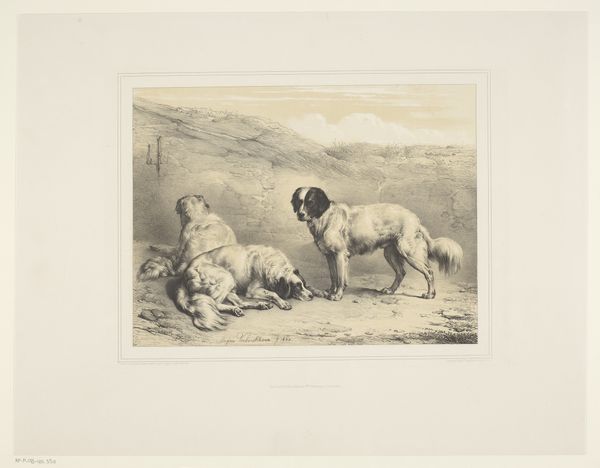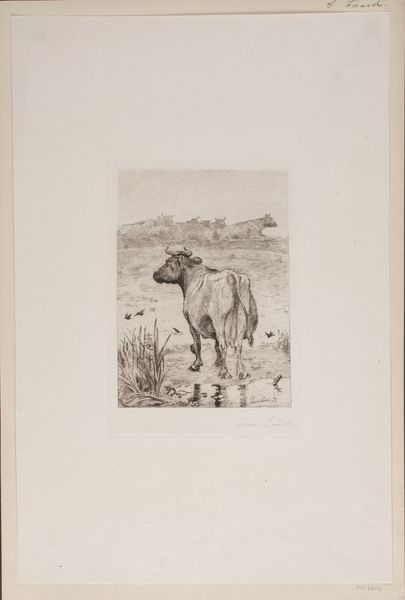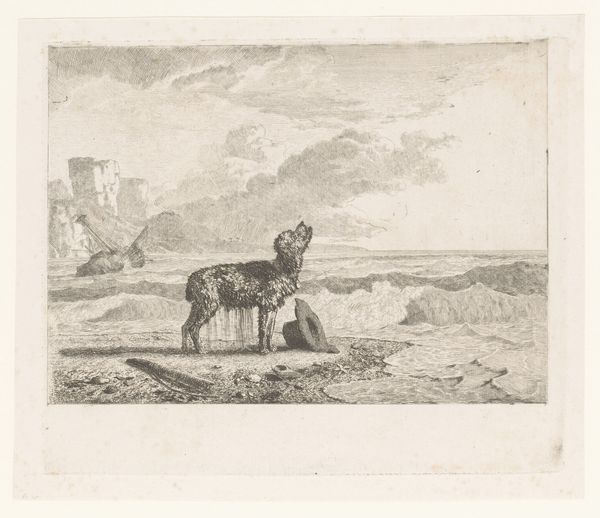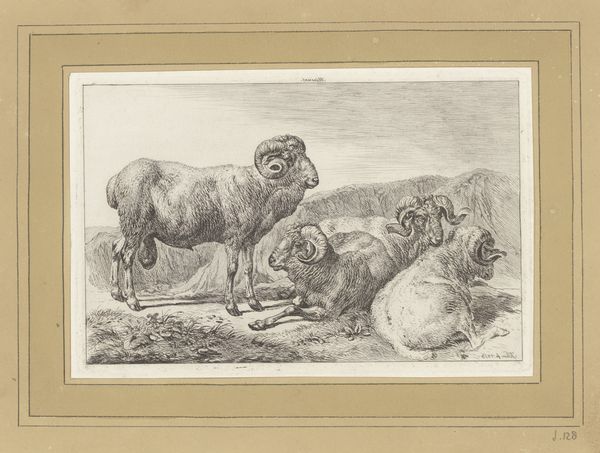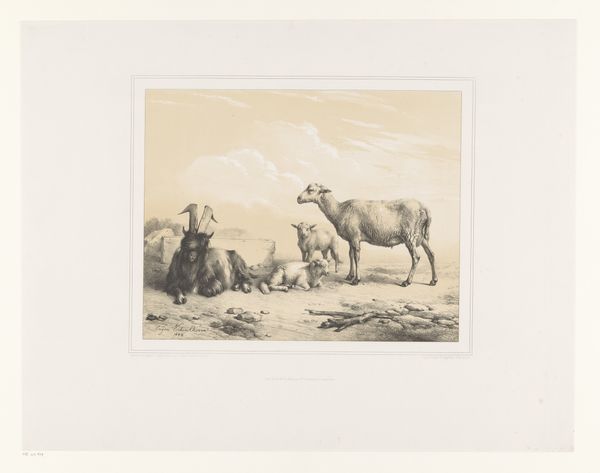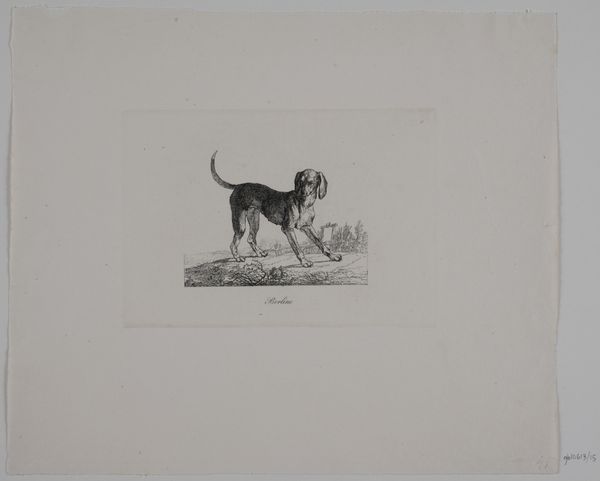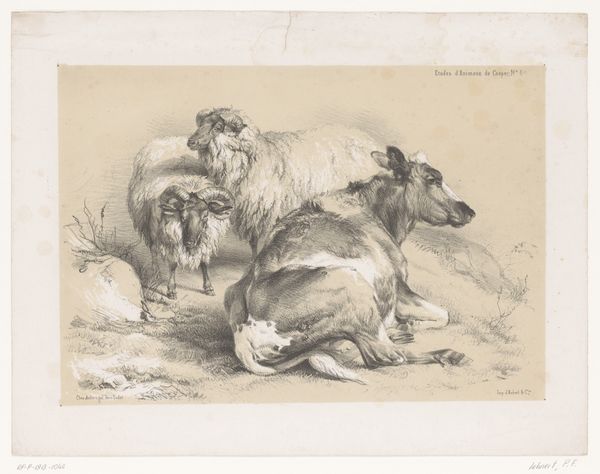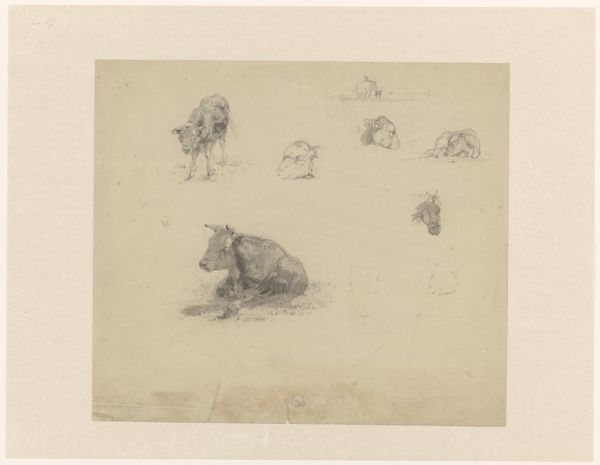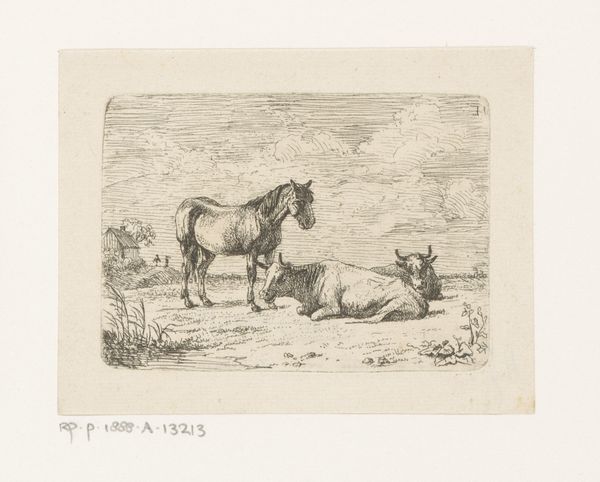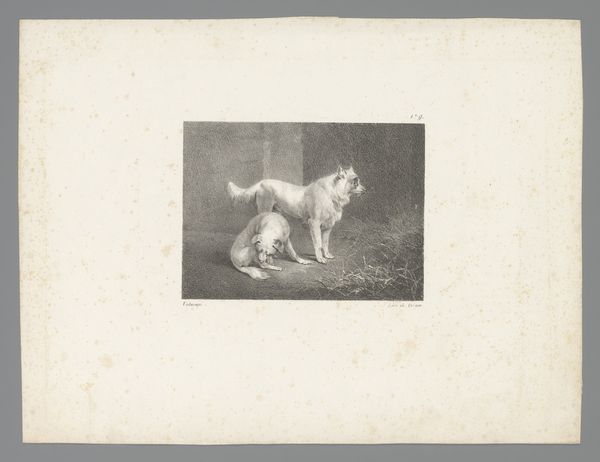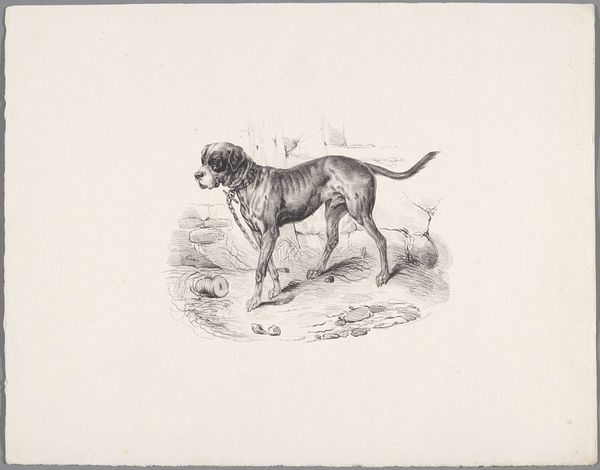
drawing, watercolor
#
drawing
#
animal
#
pencil sketch
#
dog
#
landscape
#
watercolor
#
watercolour illustration
#
watercolor
#
realism
Dimensions: height 498 mm, width 640 mm
Copyright: Rijks Museum: Open Domain
Curator: Here we have Eugène Verboeckhoven's "Three Dogs," created in 1844. The artwork, held at the Rijksmuseum, employs both drawing and watercolor. Editor: My immediate impression is a feeling of quiet contemplation. The muted tones and the dogs’ stillness create a serene atmosphere, almost melancholic. I’m interested in the textural variation. Curator: The work certainly uses the dog as a loaded symbol, a stand-in for fidelity, domesticity, and even societal status within 19th-century Dutch society. The breed variety alone suggests a narrative about hierarchy and function. Editor: Exactly. But I am wondering about the materials, and production itself: what sort of paper was Verboeckhoven using? What kind of pencils allowed for such fine detail? I am struck by the smooth surface: paper production in that era was shifting and so integral to broader economic activity. Curator: The attention to detail is impressive, especially concerning canine breeds popular at the time; the varying sizes can suggest particular human affiliations. Editor: Yes, the specificity gives a peek into material culture. Did wealthier families tend toward the shaggier dog to the right, as a status display? How was Verboeckhoven accessing these animals – through wealthy patrons eager to memorialize beloved pets, perhaps? Curator: It is quite plausible. The dog at right is depicted with almost human-like sentience. It invites questions regarding the intersection of class, representation, and man's best friend. Editor: And let’s not forget the labor involved in rendering fur, and bone structure so meticulously with watercolor and pencil. The work embodies the skills that would be later changed and even challenged through mechanical techniques of photography. Curator: Indeed. When seen through that lens, “Three Dogs” transcends simple portraiture to reflect shifting social values and evolving roles assigned to both animals and art itself. Editor: Agreed. Examining its materiality unveils the story behind its creation and connects it with economic contexts. Curator: And on my side, the animals offer enduring questions about ourselves and cultural values represented through symbolic forms.
Comments
No comments
Be the first to comment and join the conversation on the ultimate creative platform.
